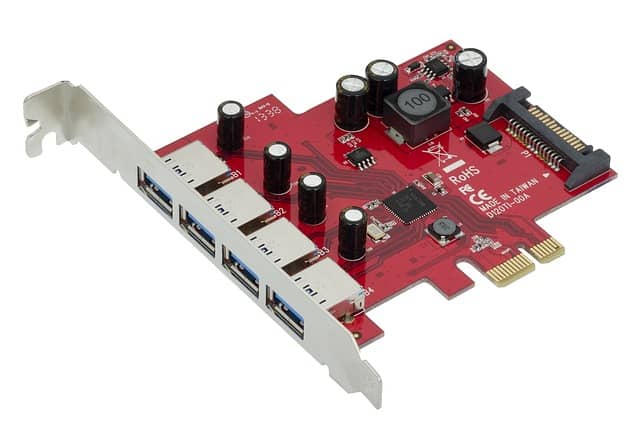Join me for a brief overview of PCI Express and what PCI Express bandwidth is available.
Per lane (each direction) | 16x equivalent:
- v1.x: 250 MB/s (2.5 GT/s) | 16x: 4 GB/s (40 GT/s)
- v2.x: 500 MB/s (5 GT/s) | 16x: 8 GB/s (80 GT/s)
- v3.x: 985 MB/s (8 GT/s) | 16x: 15.75 GB/s (128 GT/s)
- v4.x: 1969 GB/s (16 GT/s) | 16x: 31.51 GB/s (256 GT/s)
- Update: v5.x: 3,938 GB/s (32 GT/s) | 16x: 63.01 GB/s (512 GT/s)
Note: for single-lane (×1) and 16-lane (×16) links, in each direction.
GT/s is gigatransfers per second. This Wikipedia page has more information on transfers.
What is PCI Express?
PCI Express, PCIe or the Peripheral Component Interconnect Express, is the standard type of connection for internal components. This is the expansion slots on a motherboard that align vertically under the CPU socket.
PCIe has replaced PCI, AGP, and ISA commonly used connection types. PCIe is so much of a standard that you can’t buy a motherboard today that doesn’t have one of these expansion slots.
PCIe Size Chart
| Width | Length | Pins |
| PCI Express x1 | 25 mm | 18 |
| PCI Express x4 | 39 mm | 32 |
| PCI Express x8 | 56 mm | 49 |
| PCI Express x16 | 89 mm | 82 |
PCIe is so popular that it’s not expected for a new expansion type to replace it for some time to come.
Update: in fact, PCIe 5.0 will be expected to debut in late 2019 with broader availability in 2020. The linked Tom’s Hardware article also has some pretty graphs to look at as well to see the PCIe bandwidth increase over the years.
That’s all for now with this PCI Express bandwidth article. More to come!







